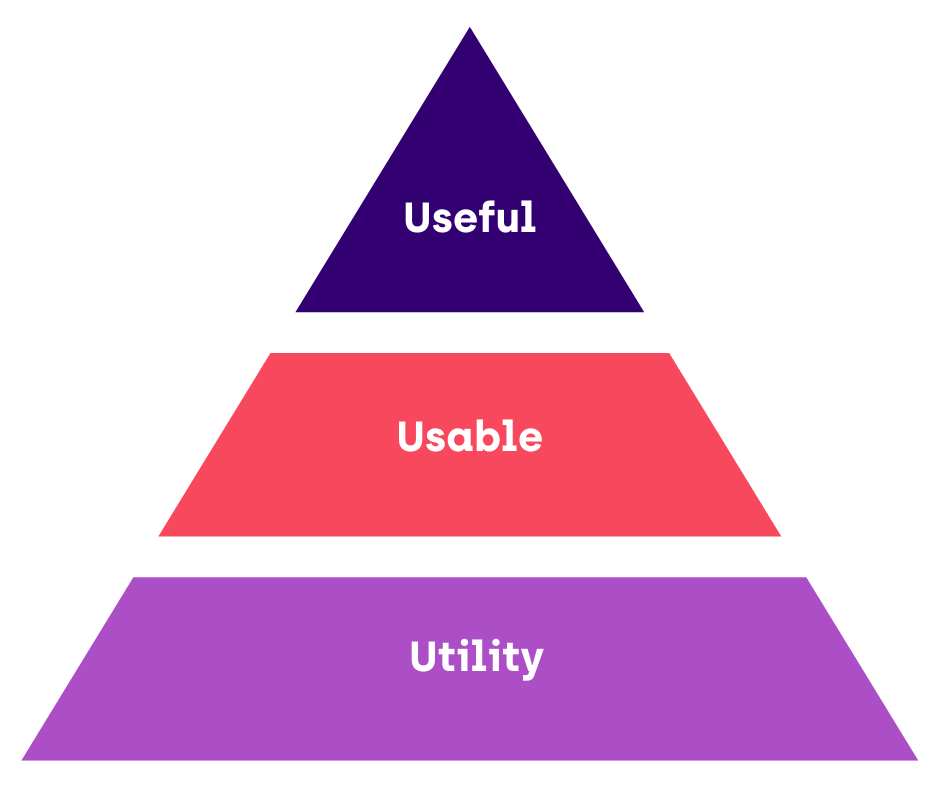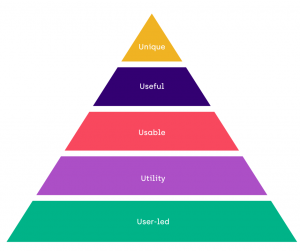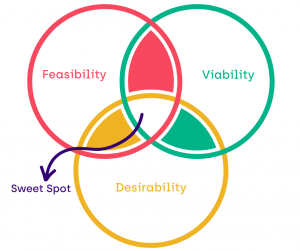
Constance Ip | Mid-Consultant
Constance is a UX Researcher passionate about evidence-based research and human-centred design. With private and public sector experience, Constance leads research programmes with her expertise in qualitative research and user testing.
At ExperienceLab we are often asked by our clients to support them to assess the quality of their User Experience (or UX) design. As there are several definitions of “user experience,” there are also several ways to assess it.
For ExperienceLab, the most meaningful way to assess User Experience is using the axiom developed by Jakob Nielsen from the Nielsen Norman Group. His equation:
Utility + Usability = Usefulness
is a mainstay for any good UX designer. It is only when usability is combined with utility that products become useful and, therefore, desirable to their users. This is often expressed visually as a UX pyramid.

But what do we mean by Utility and Usability?
Utility: the definition of Utility is whether it provides the features you need. According to Don Norman, it is the primary concern for any product or application and refers to the application’s design functionality, i.e. does the application provide the functionality that users need?
Usability: is a quality attribute that assesses how easy user interfaces are to use and is fundamental to survival when delivering new products into market.
It is defined by 5 quality components and can be remembered using the LEMER’s mnemonic:
- Learnability: How easy is it for users to accomplish basic tasks the first time they encounter an application?
- Efficiency: Once users have learned application, how quickly can they perform tasks?
- Memorability: When users return to the application after a period of not using it, how easily can they re-establish proficiency?
- Errors: How many errors do users make, how severe are these errors, and how easily can they recover from the errors?
- Satisfaction: How pleasant is it to use the application?
User-led

ExperienceLab is a user-led agency meaning all of our service and product design projects are underpinned by robust user insights. We also proudly follow the Government Digital Service’s (GDS) Service Standard.
The first two principles of the Service Standard are to:
1) Understand users and their needs by developing a deep understanding of users and the problem you’re trying to solve for them.
2) Work towards creating a service that solves a whole problem for users, working with other teams and organisations where necessary.
It sounds simple but it is surprising how, despite best intentions, products and product teams move away from solving user needs to delivering business needs with a back-end focus. Plus, if a product is built on strong user needs, the product has a higher likelihood to be solving a real problem for users and in turn be more desirable to use. Therefore, we always include user-led at the base of our UX pyramid to keep us accountable for users and their needs.
Unique
You don’t have to look in the Google Play store or Apple Store for long to realise there are a lot of applications, with many serving very similar purposes. At ExperienceLab, this often means the products we support are in competitive marketplaces with established, vocal competitors.
To stand out amidst the cacophony of noise, we always ask our product teams to consider what makes their product unique? What are the Unique Selling Points (USPs) of the product? Or what are the key Value Propositions according to their Business Model Canvas?
These considerations are crucial for turning user insight into captivating user experiences that also deliver real business value and a return on investment.

Therefore, the final aspect that we like to think about in all projects are the other non-user dimensions of the Desirability, Feasibility, Viability (DVF) framework. DVF helps designers to consider how to solve problems from three important perspectives.
- Desirability: What do customers want?
- Feasibility: What is technically and organisationally feasible?
- Viability: What is financially possible?
You can also read our other blogs on service design:
3 service design inspired principles crucial to delivering world class remote employee onboarding


